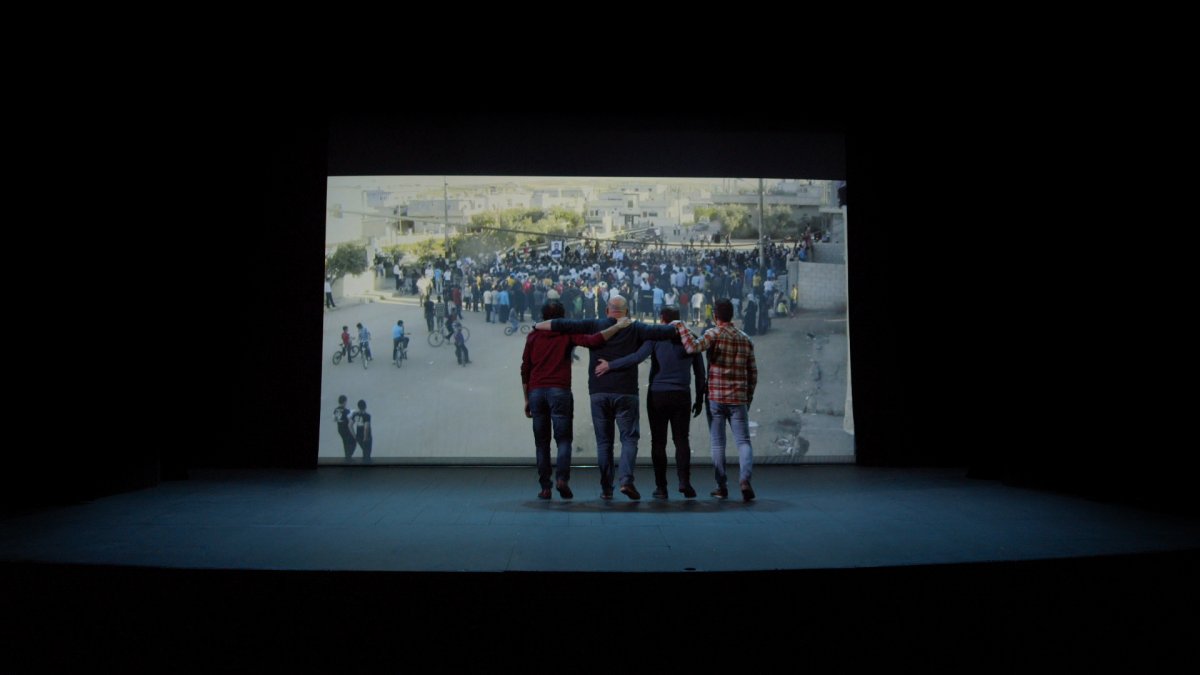By Bedatri D.Choudhury AND Tom White
Tom White: The Hot Docs Canadian Documentary Film Festival reclaimed its in-person status after a three-year, pandemic-fueled hiatus. We had the fortune to attend the Toronto-based confab, and we reacquainted ourselves with that high-octane festival vibe: the thrill of engaging with art on the big screen, the stimulating energy of Q&As and sessions, and the invigorating jolt of impromptu conversations with old and new friends. A month into spring, Toronto still felt like winter, and the brisk walks from the hotel to the Varsity Cineplex, and the TIFF Bell Lighthouse, gave us a bracing feel for a city we hadn’t visited in years.
Bedatri D. Choudhury: There is so much joy in being able to meet colleagues, watch and discuss films at leisure before realizing that you’re running late for your next screening! But there is also so much to reckon with, especially after the world and our industry have reckoned with a pandemic and the gross inequities it has re-exposed. The “Who Are Festivals For?” panel organized by World Records—with Eli Horwatt, Nataleah Hunter-Young, Brett Story, Scott Miller Berry, and others in attendance—was a humbling but important conversation. We have been talking about the labor issues within the festival ecosystem at Documentary, and the panel expanded that conversation to include the very capitalistic “festival ego” that pursues film premieres, fueled by money that comes in from submissions, ultimately not doing enough to honor the labor of the filmmakers and the workers that form the spine of film festivals. There was a lot to chew on, but I go back to the audience member who noted that with the large number of banks sponsoring festivals (Scotia Wealth Management is one of the biggest sponsors of Hot Docs), they are becoming “stewards of disaster capitalism.” As the speakers noted, film festivals are important as communal spaces of gathering and making meaning of the world around us. Which is why they’re worth fighting for, and worth rebuilding and restructuring with a care-centric focus. After all, without them, we wouldn’t be able to acquaint ourselves with these stories that then go on to change our worlds.
TW: Geographies of Solitude, from Jacquelyn Mills, earned the Best Canadian Feature Documentary Award, is a stunning film—for its cinematic audacity, its remarkable innovation in sound and vision, and its willingness to venture into daunting territory. Ostensibly a film about one woman’s crusade to preserve the ecological integrity of Sable Island, off the coast of Nova Scotia, Geographies of Solitude explores the vicissitudes of seclusion as a conduit to peace and selfhood. The protagonist, naturalist Zoe Lucas, evokes the existential explorations of Henry David Thoreau and Emily Dickinson—marveling in the minutiae, reveling in the poetry and music that her natural surroundings has to offer, and seeing into the life of things. Mills is right there with her, experimenting, in a Brakhagian sense, with the textures of 35mm film—treating it with mist and sand and ocean water, exposing it to starlight, developing it with seaweed and horsehair. In essence, nature and art collide and collaborate. Mills’ sound design captures, with her contact mics, the sounds of snails and beetles and caterpillars, making music through the electric currents they emit in concert with their walks across the sand. Mills also trains her mics on the abandoned structures on the island, recording the sound of wood creaking and pitching, expanding and contracting, moaning and wheezing.
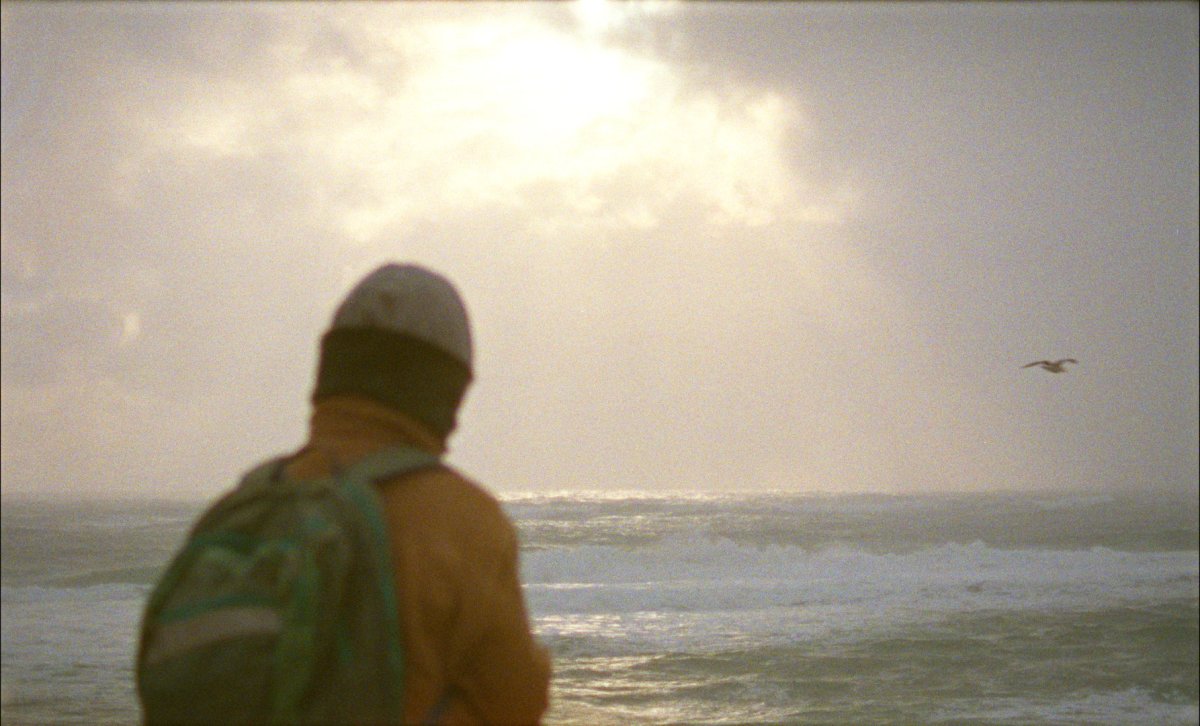
While we hear Lucas deliver a lecture throughout the film about her research and findings, and we see her participate in a Jacques Cousteau film from decades ago, these public-facing versions of her serve as a counterpoint to her private persona as the steward and guardian of Sable island, patrolling the sand for detritus washed ashore from far away, taking inventory of those creatures that have passed, rendering their bones into sculptures, documenting her findings on elaborate spreadsheets and a staggering mass of notebooks. “I lost track of everything else,” she confesses to Mills. There is an inherent sadness to Lucas’ solitude, yet her visceral sense of purpose as the fierce guardian of seemingly the last untrammeled ecosystem.
When you see the wealth of documentaries that we saw in a concentrated period, themes begin to emerge. For me, memory and recreation—as an act of reckoning, retrieval, reclamation, reconstruction and reconciliation—coursed through a number of the offerings, Chan Tze Woon’s Blue Island, which earned the Best International Feature Documentary Award, traverses among four historic movements—the 2019 Anti-Extradition Law Amendment Movement, the 1989 Tiananmen Square uprising and massacre in 1989, and demonstrations and crackdowns in 1973 on the mainland (which sparked a large-scale exodus to Hong Kong), and the 1967 protest against British rule. In light of these convulsions, Chan gathered survivors to pose the question, “What is Hong Kong to you?”
But an open-ended inquiry like this warrants a bold aesthetic exploration in response. Chan deploys a litany of strategies—re-enactments, intergenerational conversations between survivors, archival footage from 1967 to present, and recurring conceits such as one survivor swimming off the coast of Hong Kong, seemingly recreating his 1973 escape and escape attempts. The toggling from recollection to reenactment to contemporary exposition affords the viewers a rich weave of history—how it’s presented, how it’s remembered, who remembered and recounts it, and how it’s processed.
In response to the initial premise about Hong Kong and how Hong Kongers engage a territory that has never known true autonomy, one veteran activist from the 1967 uprising asks a younger activist, awaiting trial for his participation in the 2019 movement, “Have we ever been able to control our fate?”
Rami Farha’s Our Memory Belongs to Us, which premiered in the Hidden Histories section, is ostensibly a filmed reunion of four veterans of the Syrian revolution, including Farha. The comrades, separated for six years after having escaped when the revolution turned to war, gather in a theater in Paris to view and discuss the footage they had shot, uploaded and smuggled out of the country. But rather than relax in their respective seats, they stand on stage, right in front of the screen, confronting the 30-foot images they had hoped would sustain the revolution. This was filmmaking as a means of communication, of reporting—of survival, really. “Our voice is stronger than weapons,” they assert in the footage. And they reflect while watching it, “We had a moral commitment; people expected us to be strong.”
Their memories may belong to them—the horrific ones, the last images of friends before they were murdered, the constant bombardments, the glimmers of hope in protest—but the images they captured both reinforce these memories and force their collective trauma to the surface. In the Q&A, producer Signe Byrge Sorensen revealed that filming took a total of six days, including a two-day break for the friends to process what they had been experiencing. And yes, they break down, more than once. But what lingers is how filmmaking for them is a necessary conduit for both rendering memory into history, and trying to spur the world into action.
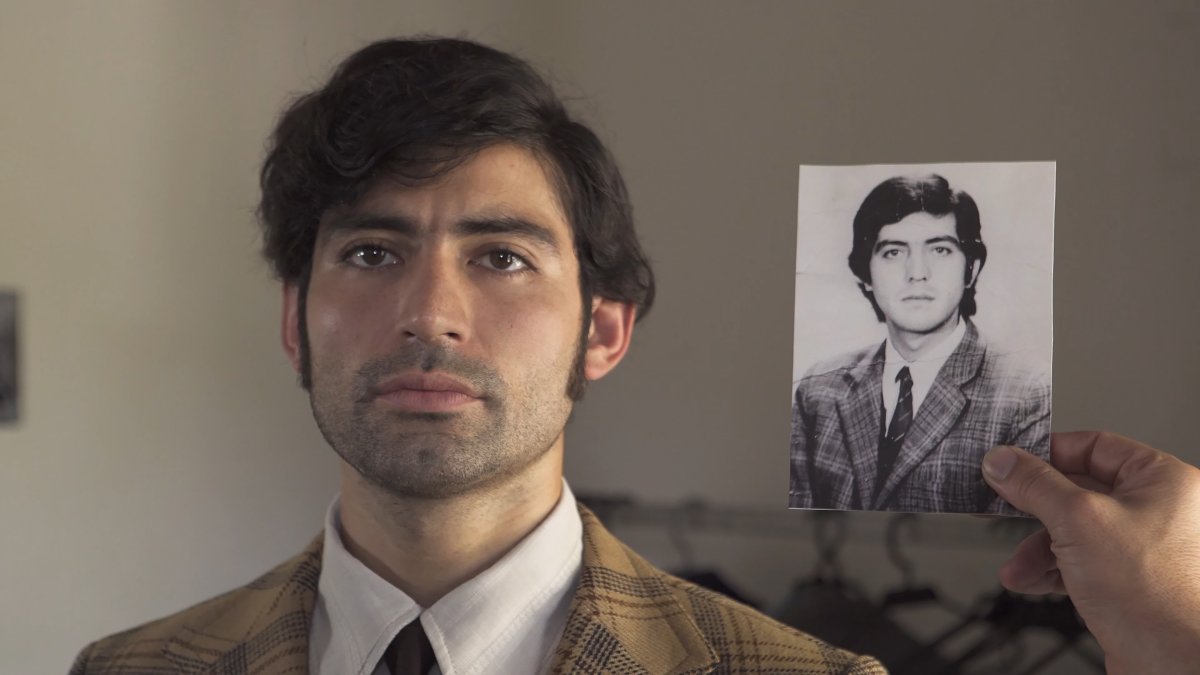
Roberto Baeza’s Meeting Point, which had its world premiere as part of the Made in Chile section, takes the idea of reenactment to an emotionally wrenching place: the horror of the Augusto Pinochet Regime. Meeting Point is a meta film, in which the son and daughter of two activists from that era—one who was murdered by Pinochet’s forces, and one who survived—embark on a film that, they hope, would reclaim the past and redeem their parents. The son, Alfredo, was a newborn when his father, Alfredo, was kidnapped, while the daughter, Paulina, knew her father Lucho’s story well; indeed, he had shared a cell with Afredo senior and was the last prisoner to see him alive.
Decades later, Lucho is a willing participant in this reclamation project, as is Alfredo Senior’s widow, both of whom meet with the actors who portray them, watch the production process, and advise on the authenticity of the recreations—in the very cell where Alfredos Senior and Lucho were tortured. This is beyond traumatizing, and breakdowns abound. That’s what a reckoning of this sort does: It propositions history with those who suffered through it and survived it. And that’s what art does—in this case both Paulina and Alfredo Junior’s film, and Roberto Baeza’s documentation of it: It affords the space for both healing and discovery.
BDC: Sometimes I wonder if this fixation with formalized, institutional mental healthcare systems is a thing of the West. If you’d remember, Tom, I wanted to ask the Chilean production team of Meeting Point if there was a therapist on the set and stopped myself. As much as there is a need to introduce mental healthcare within the folds of documentary filmmaking, I wonder if there are different ways of doing it beyond having trauma specialists on the set, speaking to a therapist etc. For their team, the making itself was like therapy, as they said, and I wonder if that would hold against the ethical standards we’ve been trying to formalize here in the West. How will we, as a community—a Western community—resist becoming this figure who travels and turns up to say, “You need help [in ways we define help]” to people who already ahve etheir own systems of coping with the immense trauma that comes with uncovering memories.
Memory, and the many things you do with it to negotiate with the world, emerged as a theme for me too. Or maybe it was just me reading into the films. Much like Meeting Point, Jackie Torrens’ Bernie Langille Wants to Know What Happened to Bernie Langille uses memory—at once fallible and reaffirming—to resurrect an old familial hurt while chasing some semblance of a closure. While Meeting Point uses quasi-fiction and reenactments, Bernie Langille uses stop-motion animation with miniature figures. The eponymous protagonist grew up hearing many different stories (read: conspiracy theories) about his grandfather (of the same name)’s strange death. In the absence of a robust and "formal" family archive, animation builds a bridge to an inaccessible, hidden-away past. This film then becomes an act of making sense of the past that helps the protagonist and his family to emerge out of a shadow of grief that has hung over them for decades. The making of the film allows a therapy-like release that finally lays a very old pain to rest. There is a risk of retraumatizing, sure, but the filmmaker and the protagonist make an active effort to visibilize the mental health care Bernie Langille received throughout and after the making of the film.
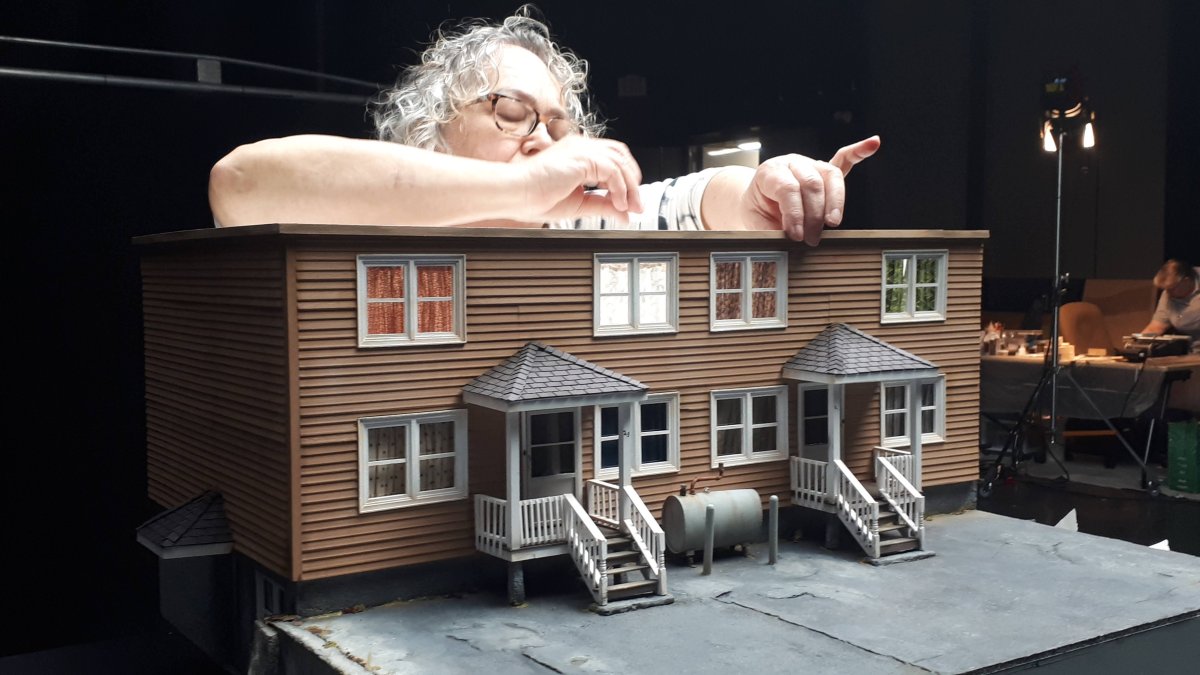
Memory plays a very important part in another of my festival favorites—Jennifer Rainsford’s All of Our Heartbeats Are Connected Through Exploding Stars. Through an incredibly patient pacing and breathtaking cinematography, the film tries to remember the devastating Japanese tsunami of 2011, the people who survived it, and the people who couldn't. It speaks to people who are stuck between remembering and recovering, who are falling back on memories that are both painful and joyous in the ways in which they remind them of the time and love they shared with people who passed away in the tsunami. The film is also in mourning of our planet that is slowly fading away into a destructive oblivion. As the two mournings and longings combine, the film questions how and what recovery really looks like and the ways in which it comes to us.
Archival films, too, are memory films that unearth the past for us to remember what is lost and sometimes, they remind us of the ways the intrinsic kindness or violence of the past keeps making their way into our future. I know these have been our favorites since their Sundance premieres, but every time I watch Riotsville, USA and Fire of Love, I discover something I had missed the last time. Such feats of archival storytelling and building bridges and connecting dots across modernities and time! Another film that does the same thing very well, and very differently, is Courtney Stephens’ Terra Femme—which brings together “informal” travelog videos by women travelers including the filmmaker herself. The film opens up a fascinating roadmap that takes us on a journey back and forth in time while keeping an eye on questions of privilege, gaze, race, and class that afford women to not just travel, but also afford the means of documenting these travels. It is at once a reclamation of the very “manly” colonial pursuit of travel and an assessment of the larger social structures that keep a woman home and/or take her far from it. As Stephens reminded us, in her pre-screening introduction, that none of the women filming their travels had ever expected to show their films on a big theater screen, Terra Femme made me question the walls we draw between experts, amateurs and hobbyists. Who gets to make films, and who gets to show them at festivals?
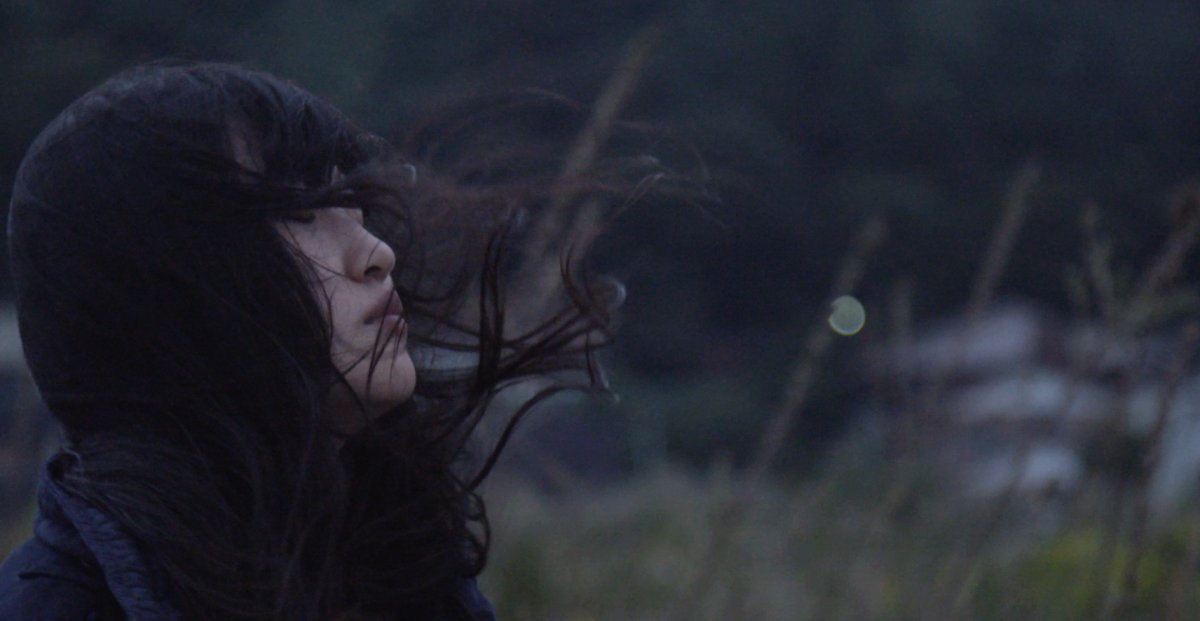
A big part of a critic’s job is to answer those questions, and I was happy to have attended another fantastic World Records panel on criticism, before I left Toronto, that questioned the gatekeeping and the movement against it, within the world of film criticism. The panelists—Genevieve Yue, Chloé Trayner and Girish Shambu—reminded us that criticism emerges from a film culture that is extremely biased and historically manned by people of immense privilege. Questions of expertise propped up as we tried to figure if there is really a distinction that separates a critic from another member of the audience. Of course, there are no right answers to these questions and all we can do—as editors of Documentary—is to always keep these in mind while we plan and edit issues. Thank you, Hot Docs for these provocations that will continue to live rent-free in our collective critical brains.
Bedatri D. Choudhury and Tom White are, respectively, Managing Editor and Editor of Documentary Magazine.





